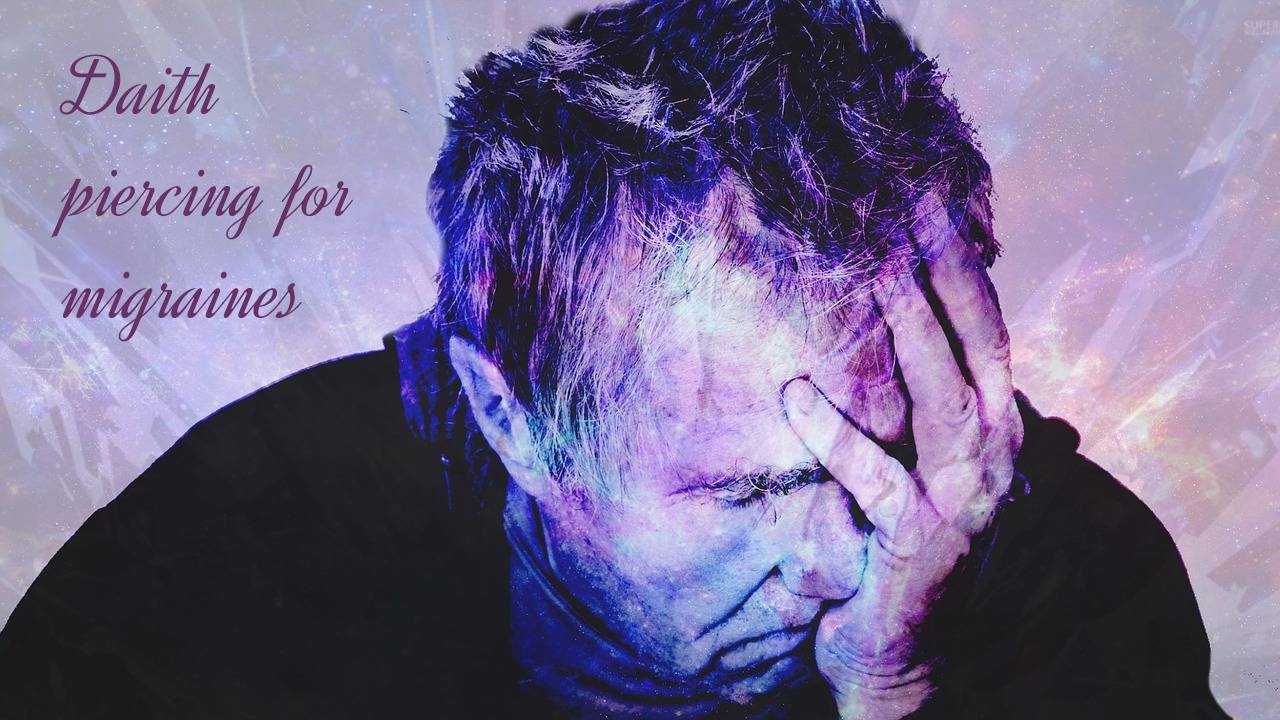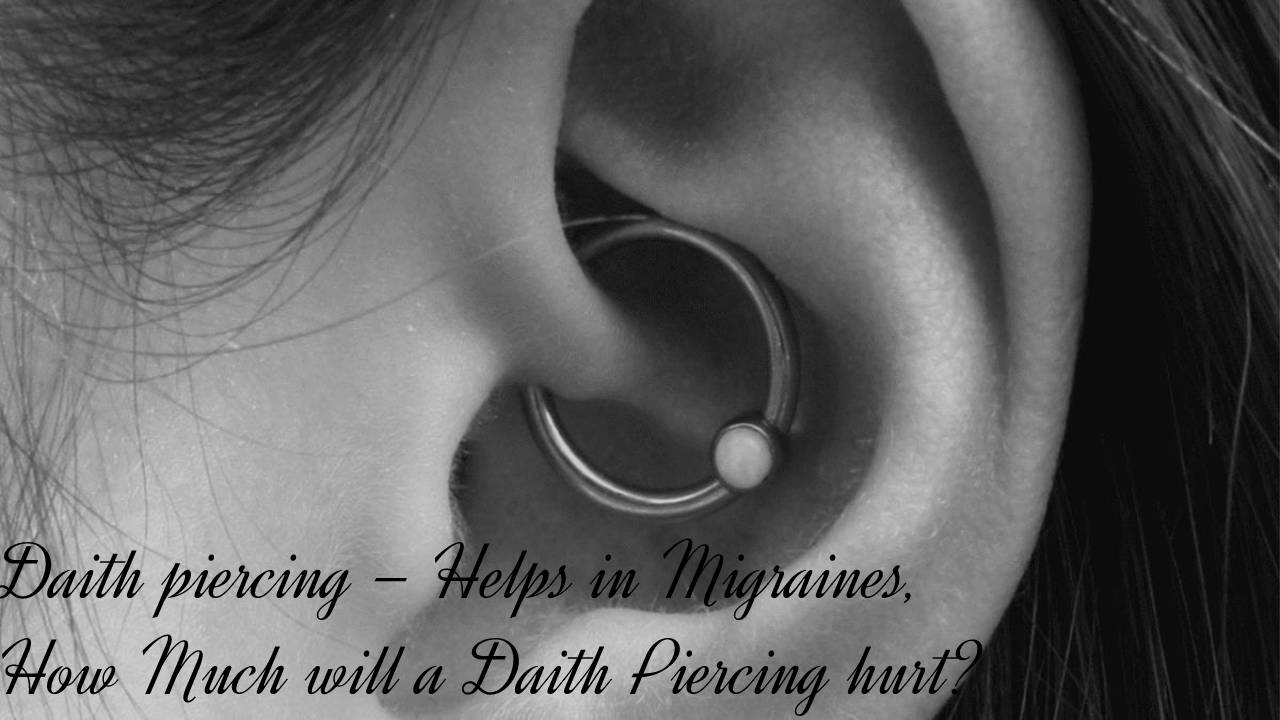Table of Contents
What is a Daith piercing?
Daith piercings are set in the ear’s cartilage (just above the ear canal).
It looks beautiful, especially when paired with ornate earlobes and propellers.
Daith piercings are supposed to alleviate migraines by activating a relaxing pressure point on the ear.
While there aren’t any studies that conclusively establish a link between Daith piercings and migraine relief,
there is plenty of anecdotal evidence.
Daith piercings are, of course, not for everyone. Unlike, for example, your lobes, your cartilage is unique to you and your ear.
The smaller your cartilage, the less likely you can pierce it.
Daith piercing for migraines
- A Daith piercing is a piercing through the innermost cartilage fold of the ear.
- The theory of Daith piercings, which helps relieve migraines.
- It depends on the idea of targeting a specific pressure point and repeating the principle of acupuncture.
- Daith piercing helps with migraines. However, when you are ready to play, it is best to choose the side of your head that is where your migraines feel strongest.
- If your migraine is not specific to one side, stab the ear you are not sleeping on.
- It will make your healing process smoother (and noticeably less painful).
- And even if your piercing doesn’t stop your migraines, at least you’ve got sick new jewelry. Correct.

How Much will a Daith Piercing hurt?
- Pain is always subjective to the individual’s experience but slightly more uncomfortable than regular cartilage piercings.
- Due to the ear’s unfavorable position, the Daith piercing must be very thinly and slowly so that the piercer does not go wrong.
- It will most likely feel a bit longer than other piercings that are finished in an instant. Drilling the Daith
still takes a few seconds. - Post-procedure pain will remain dull and tender for a few weeks, but proper follow-up care will take care of much of it.
The Daith prevalent healing process
- On average, it takes (Two/three) 2 to 3 months for a piercing to heal. Of course, it may take longer depending on how your body recovers.
- It is always a good idea to ask a piercer to look at your piercing to make sure it is completely healed, inside and out, before changing your jewelry or finishing follow-up care.
Follow-up rules
- Because the piercing is a little challenging to access, keeping the area clean can be challenging.
- There are a few options for cleaning, and you can choose the one that works best for you.
Dip the ear directly in a saline solution or a sea salt bath
- Taking a bath is the best option to keep your Daith clean.
- It would be best if you filled a cup or glass that fits your ear with a sea salt solution or an aftercare product two or three times a day.
- Dip your ear in the cup, make sure your piercing is submerged, and leave it on for 3 to 5 minutes.
- Once you complete the process, you can pat the area dry with a paper towel.
Use sea salt or saline solution
- Every ear is different, and it can be challenging to get a sea salt bath correctly.
- If so, you can soak a paper towel in an aftercare product or a sea salt solution and hold the paper towel against your Daith for 3 to 5 minutes.
- Remember, this helps to take the place of a sea salt bath. So make sure the paper towel is completely soaked.
Do not change the jewelry
- Cartilage is easily damaged than softer skin. Hence, it would help if you were very careful not to move your piercing jewelry while healing.
- Damaged cartilage can lead to perforations, keloids, and other problems that sometimes require medical procedures to be corrected.
- Avoid these complications; leave the jewelry alone. It will help if you care not to put pressure on the piercing.
- Try not to sleep or lean on the piercing while it is healing. It can be a task, especially if you are doing both at the same time.
Daith jewelry styles
- Your starting jewelry will most likely be a 16G, 3/8 “curved bar or a 16G, 7/16” captive pearl ring.
- These models are easy to insert into the piercing immediately after a puncture, and the length allows plenty of room for swelling as it heals.
- It can change to a smaller size after the healing process is complete, e.g., Ex. B. 1/4 “or 5/16”. You can find more information on standard hole sizes here.
- Curved bars and captive pearl rings are popular choices after the Daith piercing has healed. Both sports pearls look adorable when viewed from the Daith.
- Since it’s in the ear, a hint of pearl color can add an attractive aesthetic to your cartilage makeup.
- Clicker rings are also trendy. Daith-specific clickers often have a flat pin, not a curved pin, so the hoop sits
flush with your Daith. - It is common to choose more complex jewelry that adorns your ear’s conch area with these types.
- For a more subtle look, the seamless hoops also look super cute.
- These styles are most common in daith piercings that are part of a cartilage group so that the daith jewelry does not overwhelm the rest of the cartilage piercings.
- If you love the curved bar look but want the pearls more centered on the ear, a round bar is a great option.
Jewelry material
- Implant-safe materials such as stainless steel, niobium, and titanium do not degrade over long periods and have a significantly lower nickel content than surgical steel.
- They’re reliable hypoallergenic options for a cool piercing.


